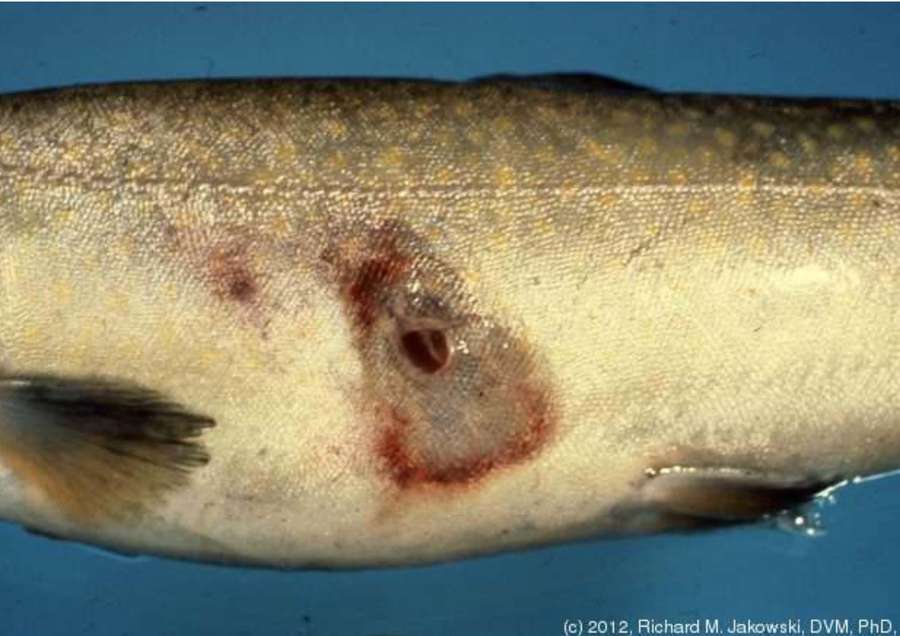How to Report Suspected Disease in Fish

Mr Barry Calderbank Communications Officer BioSecurity Department of Primary Industries, Parks, Water and Environment (DPIPWE) advises that in most cases it is not possible to make a diagnosis from a photograph, other than to say that it looks unusual and should be further investigated. It is really necessary to get samples to our Launceston Laboratory so that appropriate tests can be done.
The ideal situation is that samples should be taken from sick fish, rather than a fish that has been dead for some time, preserved in a fixative or special media and packaged and sent to our laboratory. This is feasible on a fish farm, but unlikely to be a practical option for recreational fishers.
So, for recreational fishers, the best option is to phone DPIPWE as soon as you see a fish with unusual lesions. The DPIPWE officer can then ask you the questions necessary to determine the best course of action and that may include making special arrangements to get the fish to the labs quickly.
The second best option is to keep the fish chilled (in the fridge), but only if the fish can be delivered to our labs within 24 hours. Chilling does reduce the number of lab tests that can be done.
The third best option is to freeze the suspect fish. This severely reduces the number of tests that can be done at the labs, but it is an option where you cannot phone us and/or cannot get the fish to our labs within 24 hours of catching.
The fourth best option is to photograph the fish and text or mail the photo to us with the best possible description of where you caught the fish. This is far better than not reporting the suspect fish at all and does at least give us the information we need to follow up.
Relevant phone numbers are as follows:
Emergency Animal Disease hotline - 1800 675 888 (anytime)
DPIPWE fish veterinarian - 03 6165 3260 (business hours)
DPIPWE laboratories - 03 6777 2111 (business hours)
Email - AnimalDisease.Enquiries@dpipwe.tas.gov.au